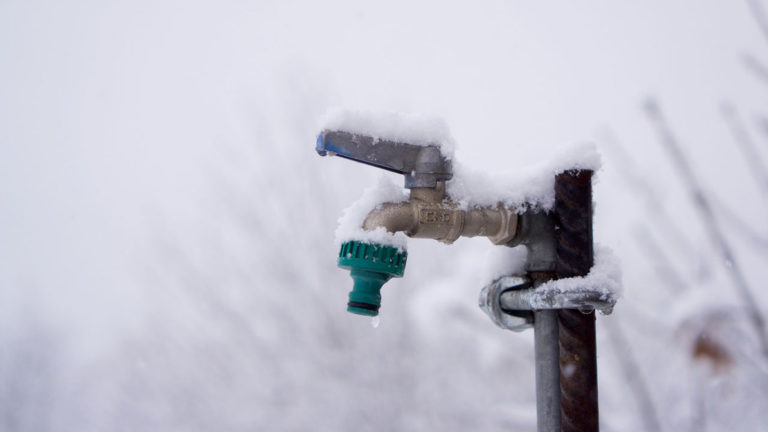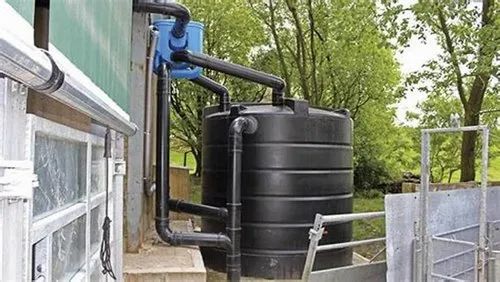By harnessing the power of rainwater and utilizing it for irrigation purposes, you can save money on your water bills while also conserving this precious resource.
Rainwater collection systems are becoming increasingly popular among environmentally conscious gardeners who want to reduce their reliance on municipal supplies.
With a simple and effective system in place, you can collect and store rainwater during the wet seasons for use during drier periods, reducing your water usage and environmental impact.
Whether you’re looking to establish a new garden or upgrade an existing one, investing in a rainwater harvesting system is a smart choice that will pay dividends in the long run.
Determine your rainwater harvesting needs
Calculate the amount of water you need to irrigate your garden based on factors such as climate, garden size, and crop type.
For instance, if you live in a hot and dry climate, your garden will require more water than if you lived in a mild and wet climate.
The size of your garden also matters, as a larger garden will need more water than a smaller one.
The type of crops you’re growing will also impact the amount of water needed, as some crops such as vegetables and fruits require more water than others such as herbs and flowers.
To calculate the amount of water needed, you can use a simple formula that takes into account these factors.
For example, for every square foot of garden space, you’ll need about 1 inch of water per week.
This can be achieved through a combination of rainfall and irrigation.
If your climate is hot and dry, you may need to supplement rainfall with additional irrigation to ensure your garden receives the right amount of water.
By taking these factors into account and using this formula, you can determine the exact amount of water your garden needs to thrive.
Choose the right storage tank
Select a tank that is appropriate for your water collection and storage needs. Consider factors such as size, material, and location.
When selecting a tank for your water collection and storage needs, it’s essential to consider factors such as size, material, and location to ensure you find the right tank for your specific needs.
The size of the tank should be commensurate with the volume of water you anticipate collecting and storing, taking into account factors such as the size of your property, the amount of rainfall in your area, and your water usage needs.
Material is another important consideration.
You’ll want to choose a tank that is made from high-quality materials that are durable and resistant to corrosion and cracking.
Common materials for water tanks include plastic, galvanized steel, and fiberglass.
Plastic tanks are lightweight, easy to install, and relatively inexpensive, while galvanized steel tanks are more durable but heavier and more expensive.
Fiberglass tanks offer a compromise between the two, with the benefits of being lightweight, durable, and resistant to corrosion.
Location is also a critical factor to consider.
You’ll want to place your tank in an area that is easily accessible, secure, and out of direct sunlight to minimize the risk of overheating and evaporation.
Ensure that the tank is positioned on a level and stable surface to prevent it from toppling over or leaking.
By considering these factors, you can select an appropriate tank that meets your water collection and storage needs, providing you with a reliable source of clean drinking water.
Install a gutter system
Install a gutter system on your roof to collect rainwater and direct it to your storage tank. Make sure the gutter system is properly sized and installed to minimize leaks and clogs.
Installing a gutter system on your roof is an essential step towards harvesting rainwater for your storage tank.
Proper sizing and installation are important to minimize leaks and clogs, ensuring that your system functions efficiently.
Begin by choosing a gutter system that is appropriate for your roof’s size and slope.
Consider factors such as the size of the gutters, downspout size, and the number of downspouts needed.
Improper sizing can lead to clogs and overflows, while improper installation can result in leaks and poor water flow.
To ensure proper installation, use sturdy brackets and secure them tightly to your roof.
Ensure that the gutters are properly pitched and that the downspout extensions are long enough to direct water away from your foundation.
Incorporate gutter guards to prevent debris accumulation and maintenance.
These guards can be installed on top of the gutters and can be customized according to your roof’s unique features.
It is important to ensure that the gutter system is regularly inspected and maintained to prevent any damage or clogs.
Properly installed gutter systems can effectively collect and direct rainwater to your storage tank, providing a reliable source of harvested water for irrigation and other household uses.
Use a first-flush device
Install a first-flush device to remove debris and contaminants from the incoming rainwater. This will help prevent sediment and bacteria from entering your storage tank.
A first-flush device is an essential component of any rainwater harvesting system, as it helps to ensure that your storage tank remains clean and free of sediment and bacteria.
The device is designed to capture the first flow of water from the roof, which typically contains the highest concentration of debris and contaminants.
By installing a first-flush device, you can remove leaves, branches, and other materials that could potentially clog your storage tank or contaminate your water supply.
This device can be particularly useful during heavy storms or in areas with heavy foliage, where debris and contaminants are more likely to enter the water collection system.
By investing in a first-flush device, you can protect your storage tank and ensure that your rainwater is safe to use for irrigation, flushing, and other non-potable purposes.
Incorporate a filtration system
Incorporate a filtration system to remove sediment and bacteria from the rainwater before it is distributed to your garden. This will help ensure that your plants receive clean water.
A filtration system is an essential component of any rainwater harvesting system, as it helps to remove sediment and bacteria from the collected rainwater before distributing it to your garden.
Sediment can include particles such as dirt, dust, and debris that can accumulate in the collection tank, while bacteria can include harmful microorganisms that can be present in the water.
By removing these contaminants, you can help ensure that your plants receive clean water, free from harmful substances that can negatively impact their growth and health.
There are several types of filtration systems available, including sediment filters, activated carbon filters, and ultraviolet (UV) filters.
Sediment filters use a variety of materials, such as sand or cotton, to physically remove particles from the water, while activated carbon filters use activated carbon to absorb organic compounds and other impurities.
UV filters use UV light to kill bacteria and other microorganisms.
Regardless of the type of filtration system you choose, it is important to regularly maintain and clean the system to ensure its effectiveness.
By incorporating a filtration system into your rainwater harvesting system, you can help ensure that your plants receive clean, healthy water, and that your system operates efficiently and effectively.
Use a pressure pump
Use a pressure pump to distribute the rainwater to your garden. This will help ensure that the water is delivered evenly and at the appropriate pressure for your plants.
To ensure that your plants receive the right amount of water, it’s essential to use a pressure pump to distribute the rainwater evenly throughout your garden.
Unlike a simple garden hose, a pressure pump can deliver water at the appropriate pressure for your plants, which can help to prevent overwatering or underwatering.
By using a pressure pump, you can customize the amount of water each plant receives based on its specific needs, taking into account factors such as soil type, plant size, and climate conditions.
A pressure pump can help to prevent waterlogging and other irrigation-related problems, making it a vital component of any efficient and effective irrigation system.
Install drip irrigation lines
Install drip irrigation lines to deliver the rainwater directly to the roots of your plants. This will help reduce water loss due to evaporation and runoff.
Installing drip irrigation lines is an effective way to deliver rainwater directly to the roots of your plants, reducing water loss due to evaporation and runoff.
Drip irrigation systems involve placing tubes and emitters in the soil around your plants, allowing water to seep into the soil and reach the roots slowly and consistently.
This targeted watering approach ensures that your plants receive the right amount of moisture, eliminating the need for frequent watering and minimizing waste.
Drip irrigation systems can be designed to deliver water only to the plants that need it most, promoting healthy growth and optimal yields.
By investing in a drip irrigation system, you can optimize your water usage, conserve resources, and improve the overall health and productivity of your garden or farm.
Monitor and maintain your system
Regularly monitor and maintain your rainwater harvesting system to ensure it is functioning properly. Check for leaks, clogs, and other issues, and make repairs as needed.
To ensure the optimal functioning of your rainwater harvesting system, it is important to regularly monitor and maintain it.
This involves checking for leaks, clogs, and other issues that could impede the system’s performance.
Leaks can occur in any part of the system, from the gutters to the storage tank, and can lead to significant water loss and decreased system efficiency.
Clogs can form in the downspout, filter, and distribution lines, restricting water flow and causing backup.
Therefore, it is important to regularly inspect these components and clear any blockages.
You should check the storage tank for any signs of damage, such as cracks or rust, and make repairs as needed.
Proper maintenance will not only extend the lifespan of your system but also ensure a reliable source of water for your home.
Want More? Dive Deeper Here!
Hey there! If you’re the type who loves going down the rabbit hole of information (like we do), you’re in the right spot. We’ve pulled together some cool reads and resources that dive a bit deeper into the stuff we chat about on our site. Whether you’re just killing time or super into the topic, these picks might just be what you’re looking for. Happy reading!






